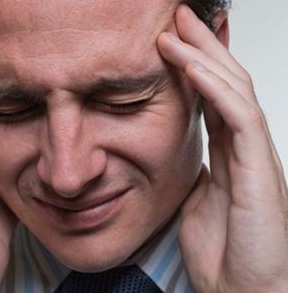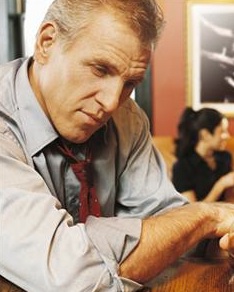
In Spring 2006 the depression of two very successful men made newspaper headlines in Maryland: Phil Merrill, a renowned publisher, entrepreneur and diplomat in the Washington area took his own life. Eleven days later Montgomery County Executive Douglas Duncan withdrew his candidacy for governor of Maryland because of his struggle with depression. For weeks, newspapers covered male depression, including the stories of Abraham Lincoln, Winston Churchill, Archbishop Raymond Roussin, Mike Wallace, William Styron, Art Buchwald, and Robin Williams.
That was unusual. Because, in the majority of media stories and infomercials, depression is regarded as a feminine thing … a result of all of the hormonal shifts and baby-making stuff. The reality? Six million men, or seven percent of American men, suffer from depression, and millions more suffer silently because they either don’t recognize the symptoms, which can vary from women’s, or they are too ashamed to get help for what they see as a woman’s disease. These 12 techniques were written for men to address the hidden desperation so many feel, and to expose the truth about mood disorders and gender.
1. Get a male perspective.
When I hit bottom after the birth of my second baby, I was lucky enough to see Brook Sheild’s beautiful face on “Oprah” describing how I felt. In her book, and in Kay Redfield Jamison’s “An Unquiet Mind” and Tracy Thompson’s “The Ghost in the House,” I found female companionship, as they articulated what was happening to me. That alone made me less scared.
There are some wonderful books tackling the male perspective of depression. Among them: “I Don’t Want to Talk About It: Overcoming the Secret Legacy of Male Depression” by Terrence Real, “Unmasking Male Depression” by Archibald Halt, and, of course, the classic, “Darkness Visible” by William Styron. There are also an array of blogs by men on the topic of depression and mental health. For example, check out “Storied Mind,” “Chipur.com,” “Knowledge Is Necessity,” “Lawyers with Depression,” “Midlife-Men.com,” “Finding Optimism,” and “A Splintered Mind.”
2. Identify the symptoms.
Part of what makes male depression so misunderstood is that a depressed guy doesn’t act the way a depressed lady does, and the feminine symptoms are the ones most often presented in pharmaceutical ads and in glossy brochures you pick up at your doctor’s office . For example, it is not uncommon for a man to complain to his primary care physician about sleep problems, headaches, fatigue and other unspecified pain, some or all of which may be related to untreated depression. In her Newsweek article, “Men & Depression,” Julie Scelfo writes, “Depressed women often weep and talk about feeling bad; depressed men are more likely to get into bar fights, scream at their wives, have affairs or become enraged by small inconveniences like lousy service at a restaurant.”
3. Limit the alcohol.
An interesting study by Yale University discovered that men and women respond to stress differently. According to lead scientist Tara Chaplin, women are much more likely to feel sad or anxious as a result of stress, whereas men turn to alcohol. “Men’s tendency to crave alcohol when upset may be a learned behavior or may be related to known gender differences in reward pathways in the brain,” she said. The tendency, however, puts men at more risk for alcohol-use disorders. And since alcohol is, itself, a depressive, you really don’t want a lot of it in your system. Trust me on this one.

